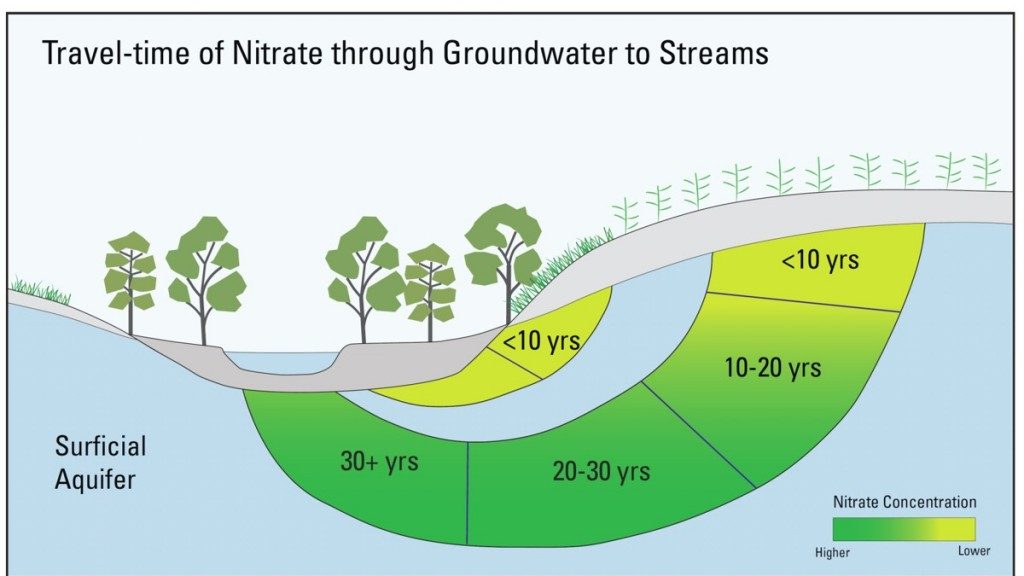
Fact Sheets And Publications
Water Quality Trends in Delaware and the Region
Delaware is a very well monitored state. Delaware's Department of Natural Resources and Environmental Control (DNREC) maintains approximately 145 stream sampling stations where grab samples are collected at least every other month and several additional sites collect data more frequently. Because so much data is available, we know that many of our waters are considered impaired due to high levels of nutrients like nitrogen and phosphorus, which contribute to algal blooms and large fluctuations in dissolved oxygen levels. These conditions negatively impact the ability of aquatic life to survive and thrive in some locations.
A lengthy historic record of water quality data from the Chesapeake Bay watershed, show that a good majority of stream sites are improving! According to the US Geological Survey, approximately 70% of their sites are improving for both nitrogen and phosphorus over their long-term record (http://cbrim.er.usgs.gov/trendandyieldhighlights.html). Water quality data maintained by DNREC also show improvements statewide in more recent years, but loading trends are tightly tied to precipitation and the amount of stream flow in any particular year (H. Mirsajadi, oral communication).
Most of the water in Delaware streams originates as groundwater. When it rains on land, water percolates through our sandy soils and enters the surface aquifer, becoming groundwater. As that water percolates through the soils, it also picks up dissolved pollutants, like nitrogen. But, it can take years to several decades for groundwater to move down and under a landscape to where it finally discharges to a stream. So, the quality of stream water, especially when it is made up primarily of discharging groundwater, really reflects what was happening on the surface of the land years ago. This is why it is also important to monitor the quality of our groundwater too since it will give us a sense of how our more recent management actions will be impacting stream water quality in the future.
The US Geological Survey has monitored the quality of groundwater across Delmarva several times in the 1990s, early 2000s, and in 2012. When comparing the early 2000s data to 2012, the range of nitrogen concentrations are about the same, but it appears that the median concentration has decreased from about 9 mg/L to 6 mg/L nitrate as nitrogen. This decrease possibly reflects the effectiveness of nutrient management practices employed in our state and region since the late 1990s. Unfortunately, the sample set was not large enough to consider this decrease statistically significant (J. Denver, oral communication). But, this apparent decline is promising and has prompted an increased interest and focus on more thoroughly assessing the condition of shallow groundwater in our region in order to credit nutrient management with water quality benefits.
As it was stated earlier, it takes a long time for groundwater to move and we may need to wait more than a decade to see improvements in our stream samples. But, understanding this process is vitally important to communicating our nutrient management efforts and progress towards improved water quality.
Author(s):
J. Volk
Department of Plant and Soil Sciences
University of Delaware
Original Publication Date: March 2014
Peer Reviewers:
Judy Denver, U.S. Geological Survey, Dover, DE.
This institution is an equal opportunity provider.
UD Cooperative Extension
This institution is an equal opportunity provider.
In accordance with Federal law and U.S. Department of Agriculture policy, Cooperative Extension is prohibited from discriminating on the basis of race, color, national origin, sex, age, or disability.

